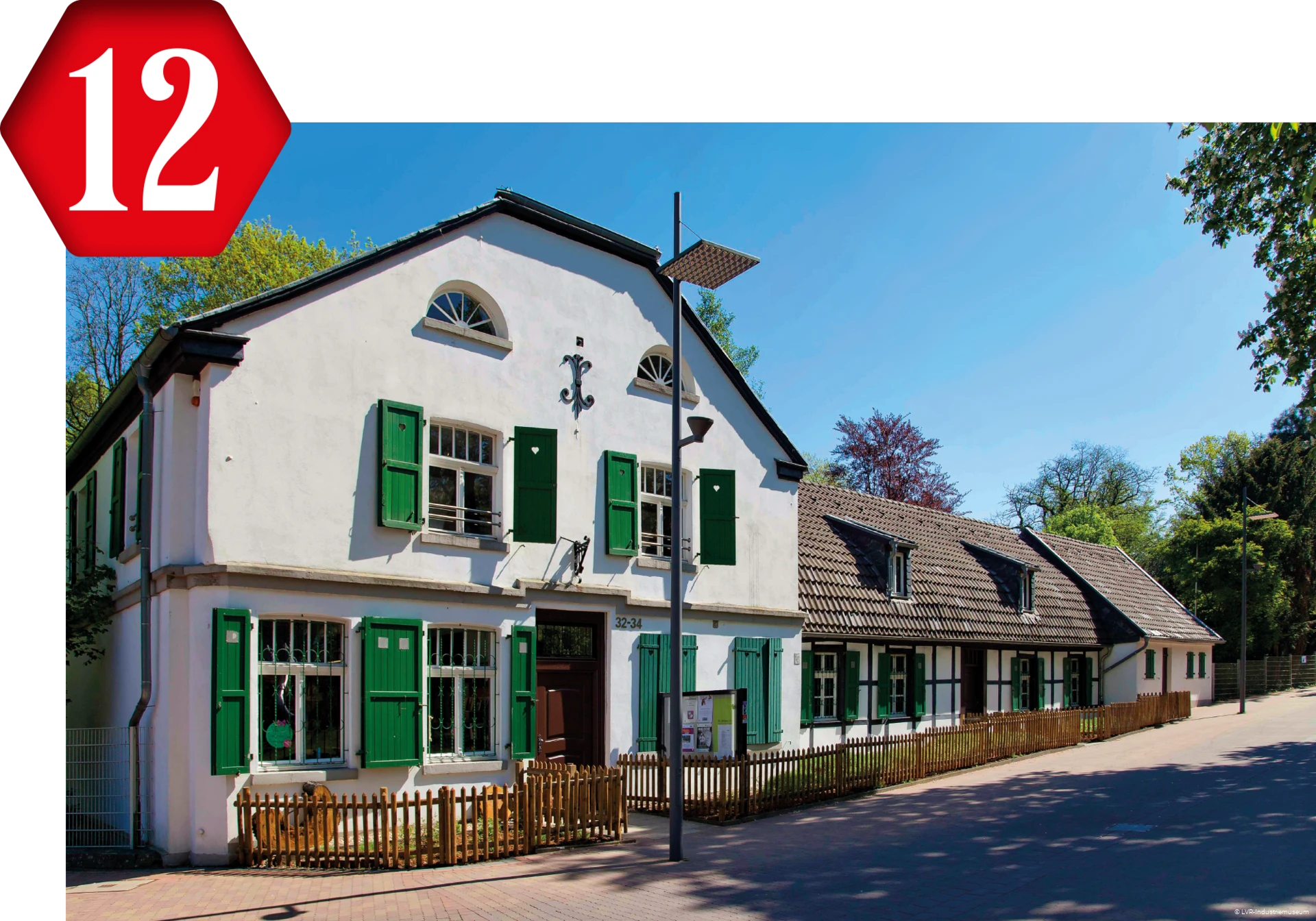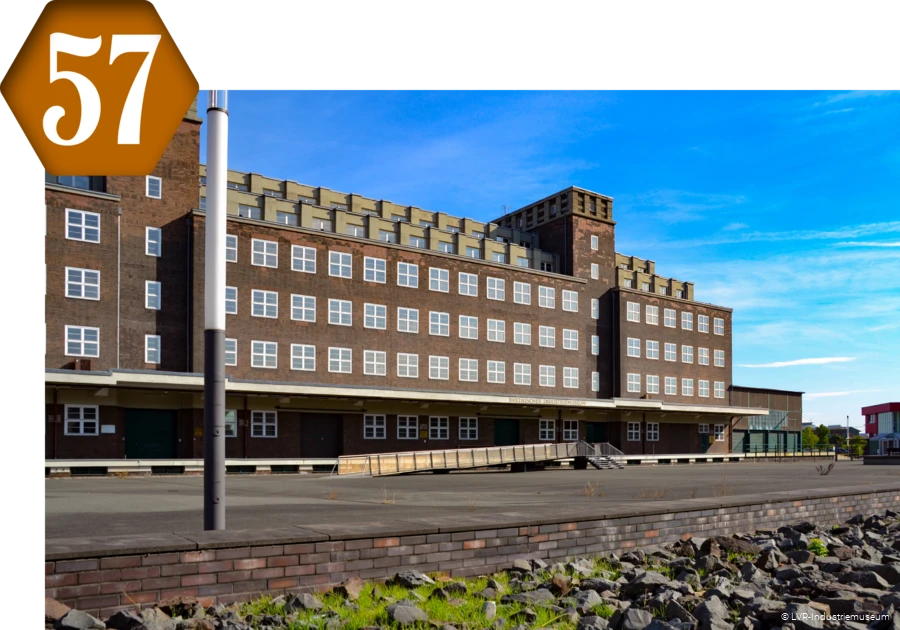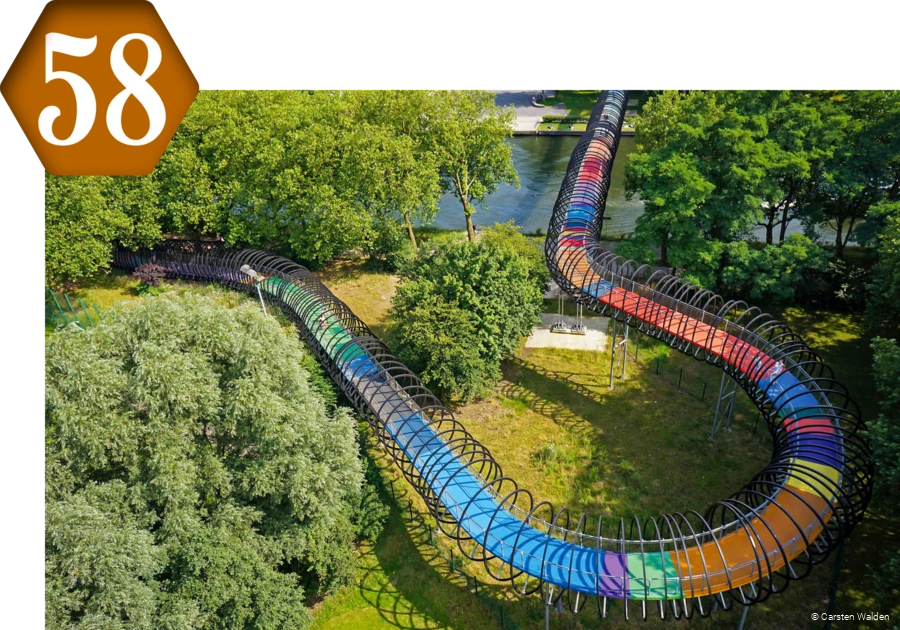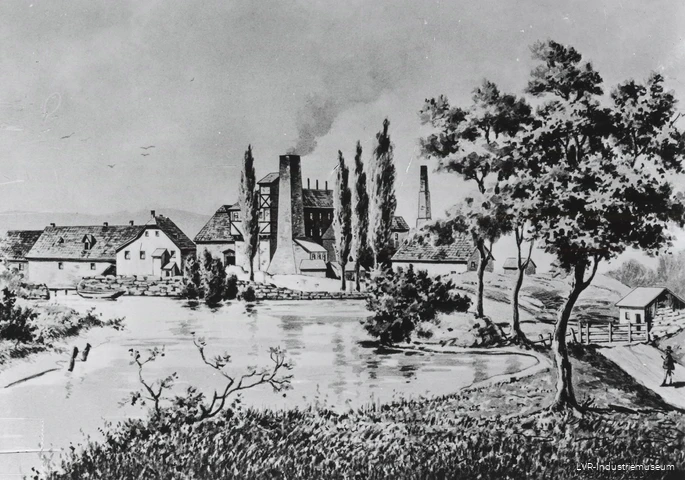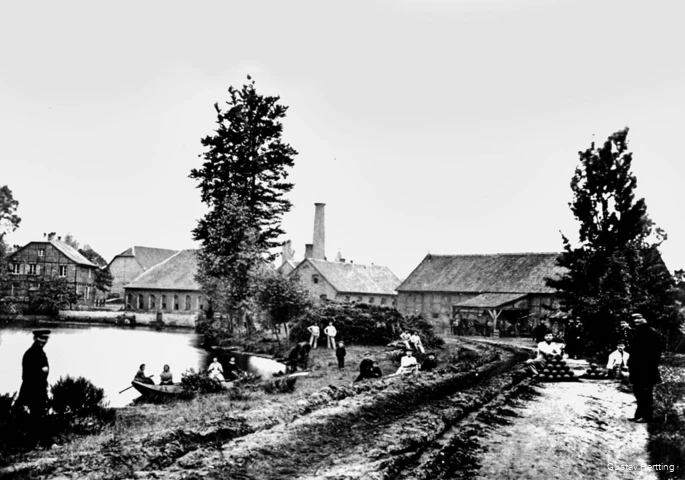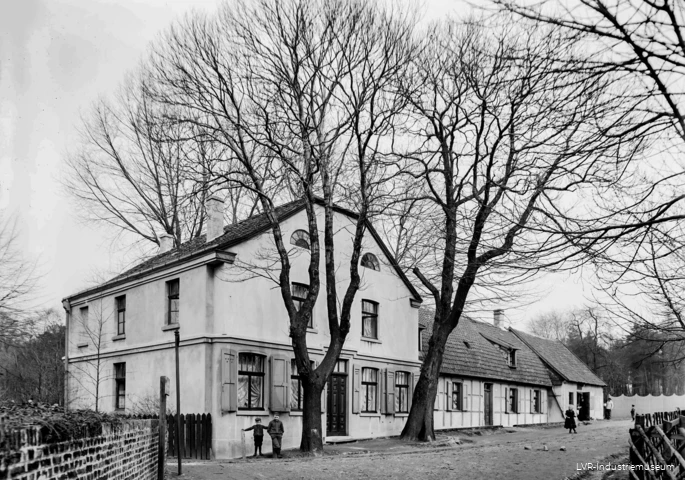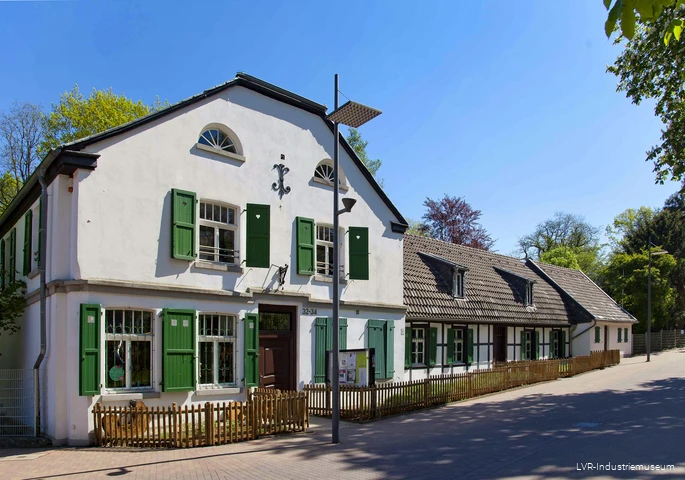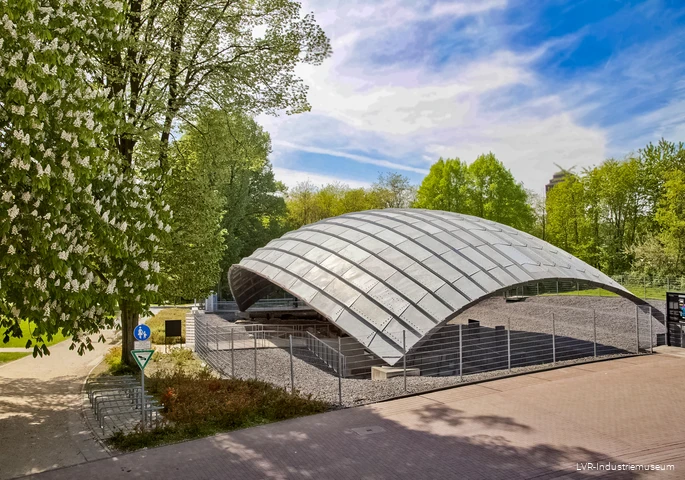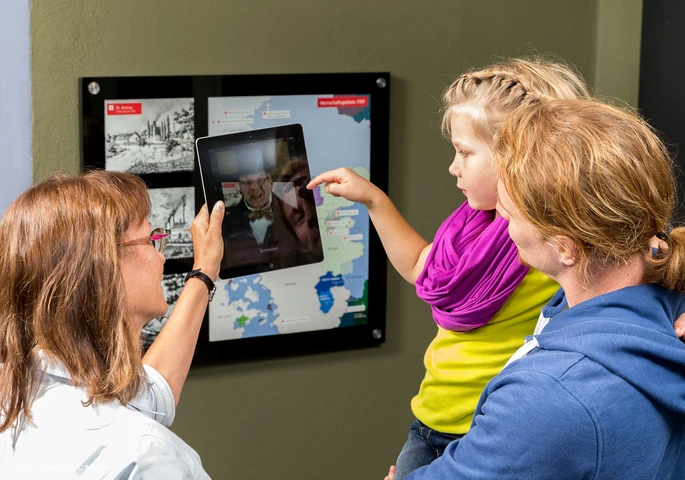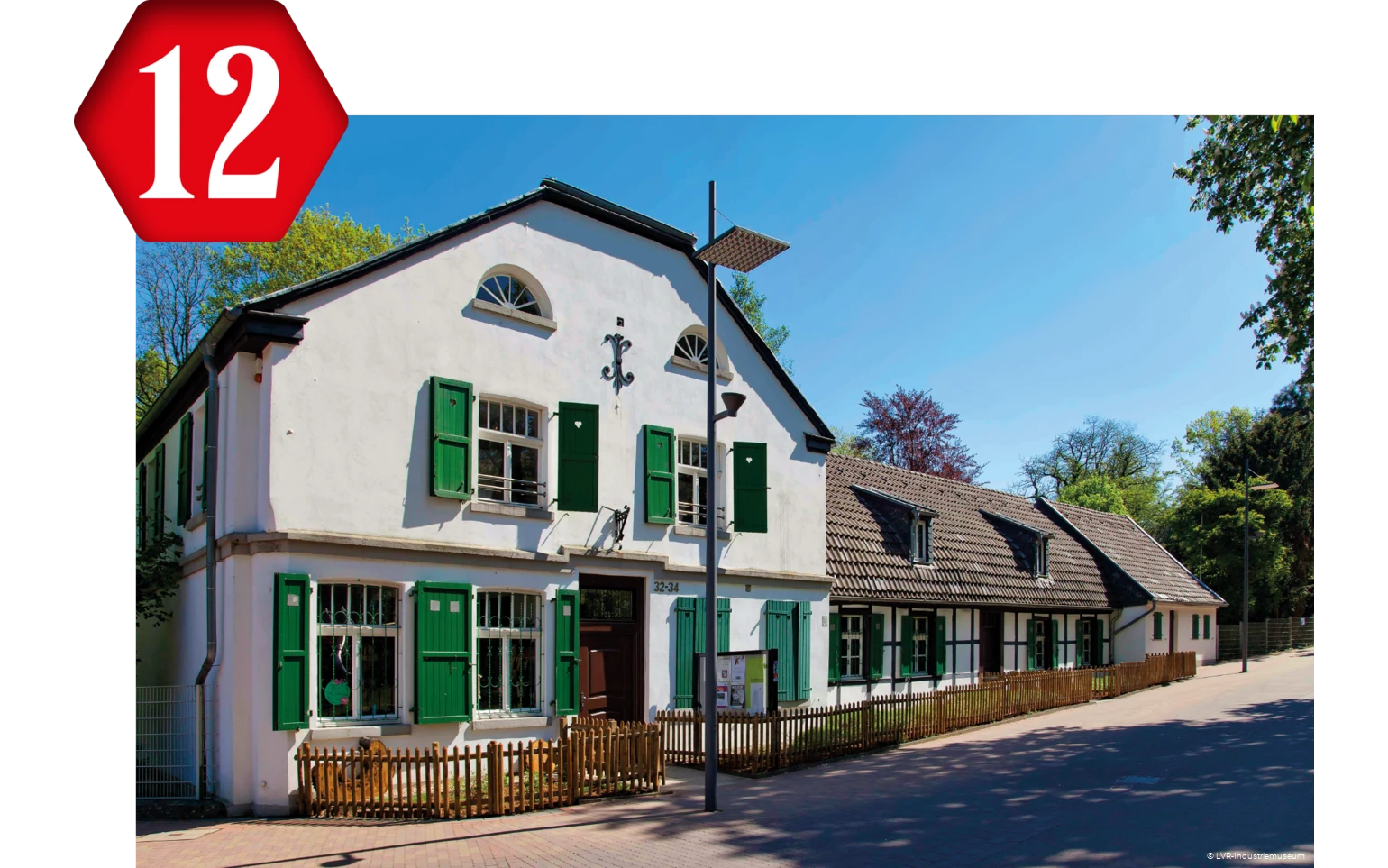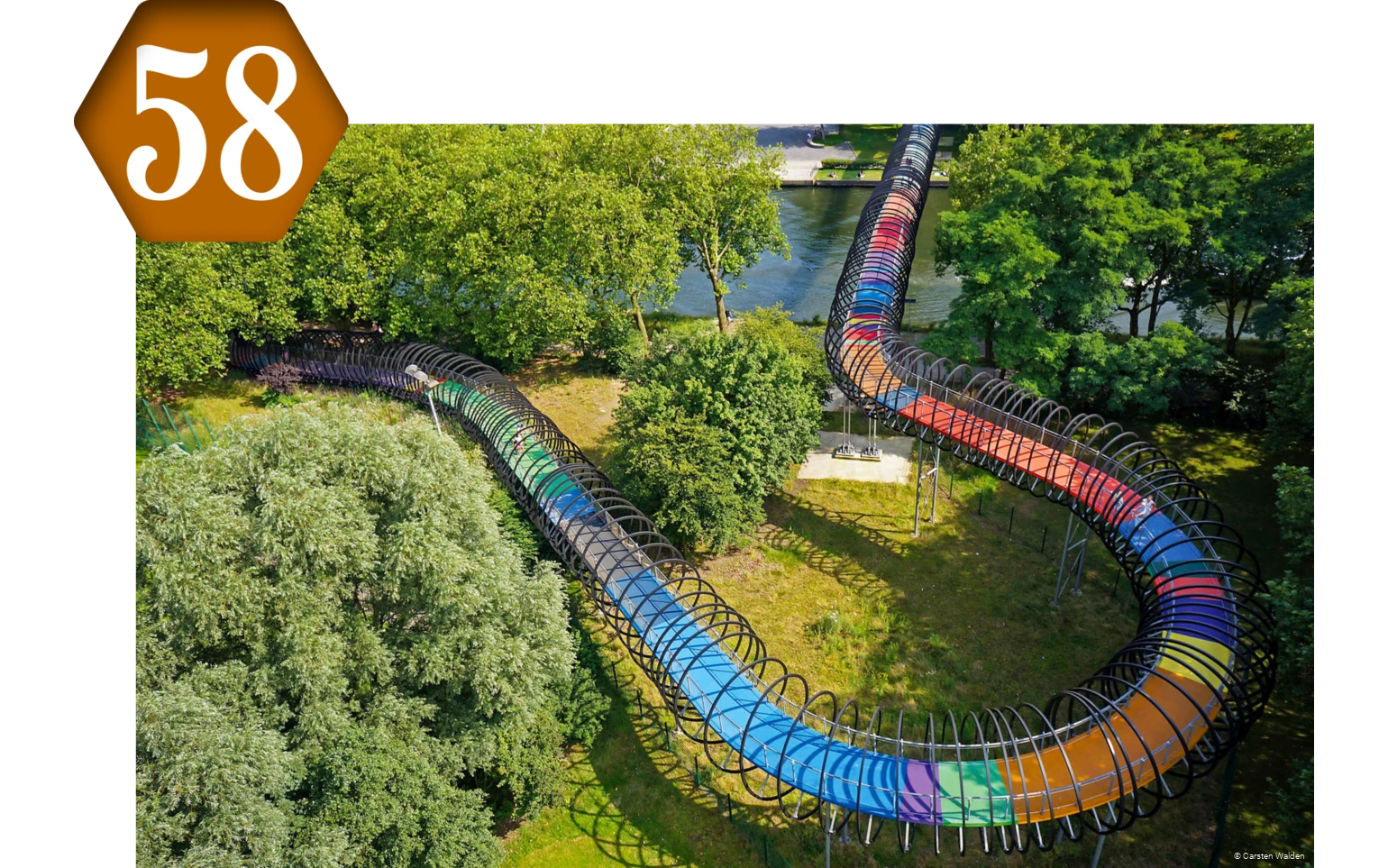Drawing of the hut [around 1834]
LVR-Industriemuseum St. Antony-Hütte
The "cradle of the Ruhr industry" is highly idyllic: next to the remains of the first ironworks in the Ruhr region - in 1758 - the office building and the former home of the ironworks manager are reflected as dignified half-timbered houses in the pond of the Elpenbach. Johann Eberhard Pfandhöfer, a dubious ironworks foreman from Siegen, is at the center of the power struggle that accompanies the birth of the Ruhr ...
- Infotext read more
-
… For two rival political powers directly border the St. Antony ironworks in Recklinghausen, Electorate of Cologne: the Prussian Duchy of Cleves and the Essen Imperial Convent. In 1781 and 1791 they establish two nearby ironworks, Gute Hoffnung and Neu-Essen. In this emerging industry, Pfandhöfer flits between parties, piles up debts and finally flees to the Netherlands.
The jostling for power regarding the St. Antony ironworks involves figures who largely shape the development of the Ruhr District. Baron Franz von der Wenge, the enterprising Canon of Münster, sets the ball rolling. Around 1740 he comes across local deposits of bog iron and instantly grasps the potential of his discovery. However, the permission to build an ironworks takes many years, and even after the blast furnace is first started in 1758, the business is ill-fated: cast iron products such as pots and pans, which are produced there in addition to pig iron, are of poor quality, and after only one and a half months the stocks of raw materials are used up.
In the end, Freiherr von der Wenge withdraws from the business and leases the iron mill. At the same time, with the competing companies Gute Hoffnung and Neu-Essen, new players enter the stage of the fledgling Ruhr District: Helene Amalie Krupp, who temporarily acquires the Gutehoffnungshütte in 1798 and with whom the Siegen ironmaster Johann Eberhard Pfandhöfer becomes hopelessly indebted, as well as Gottlob Jacobi, ironmaster of Neu-Essen, and not least the brothers Franz and Gerhard Haniel, who found the "Hüttengewerkschaft und Handlung Jacobi, Haniel & Huyssen" together with Jacobi and Heinrich Arnold Huyssen in 1808. Two years later they merge the ironworks St. Antony, Gute Hoffnung and Neu-Essen and thus lay the foundation for the later globally operating Gutehoffnungshütte.
1843 sees the end of smelting operations at St. Antony. The iron foundry continues to produce until 1877. The historical plant design is illustrated by an excavation with the archaeological remains of the ironworks, covered by a futuristic steel roof.
Steel Time Travel Destinations Nearby
The "steel time travelers" Luise & Alfred: LVR-Industriemuseum St. Antony-Hütte
Al:
And here - täteretää! The birthplace of modern iron smelting, melting point of industry in the Ruhr, home of the ...
- Full dialog text
-
Al: And here - täteretää! The birthplace of modern iron smelting, melting point of industry in the Ruhr, home of the ...
Lu: Don't make me laugh - but don't tell me any Dönekes! First of all, it looks exactly like my home in the Sauerland: stream, pond, smelter, furnace - and secondly, the highly praised Herr Hüttenmeister came from the deepest Siegerland, didn't he?
Al: No matter - but this is where it all began! Just take a look at this ingenious ensemble of technology and sophistication!
Lu: I've seen it all before. We can do it too! But I leave the good faith to you - hopeless case!
Al: And the ore was practically on the street - uh - under the lawn ...
Lu: ... but the first blast furnace was built here by "guest workers" from abroad, after there had been quarrels for years - about keeping the stream clean! That really didn't go well!
Al: All beginnings are difficult !
Lu: I am not impressed! Here there is no more hope - Zankapfel hut - over generations!
Visitor information
Address:
Antoniestraße 32-34
46119 Oberhausen
Phone: 02234/9921555
info@kulturland-rheinland.de
www.industriemuseum.lvr.de
Opening hours:
Tue-Fri: 10 a.m. - 5 p.m.
Sat/Sun/Holidays: 11 a.m. - 6 p.m.
![]()
![]()
![]()
![]()
![]()
